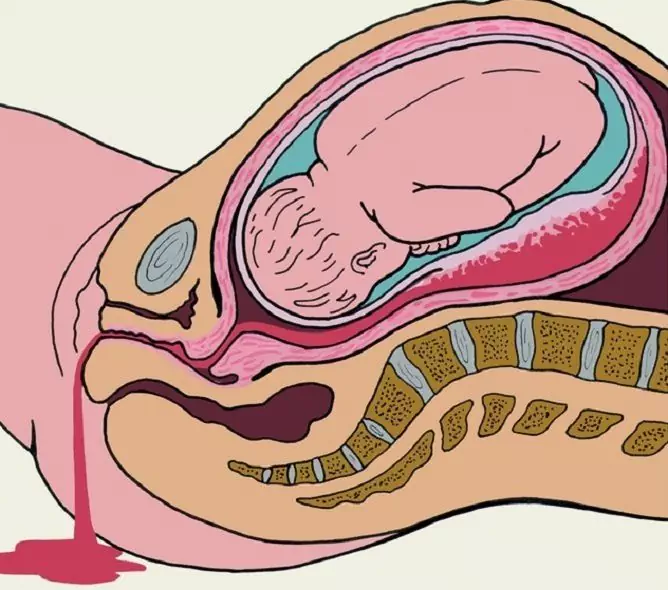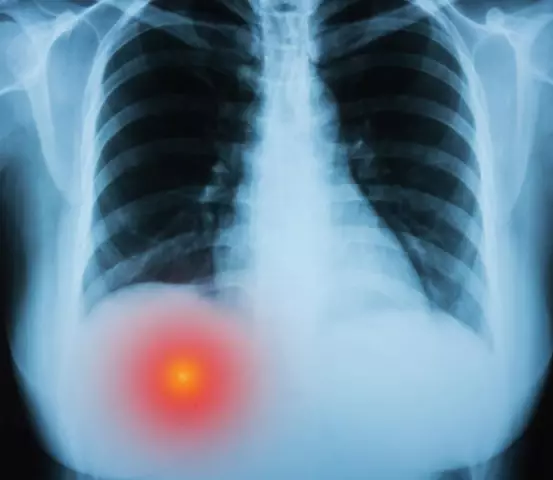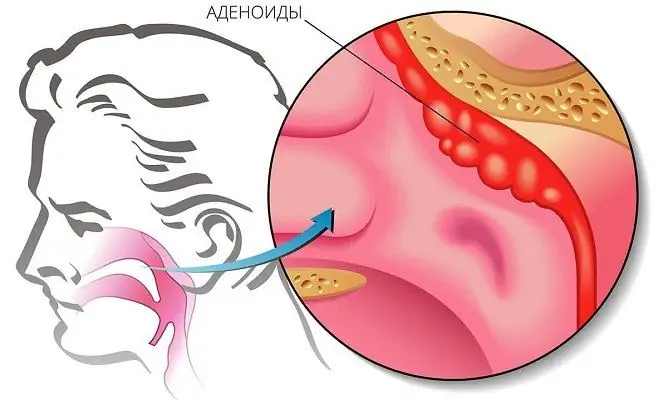- Author Rachel Wainwright [email protected].
- Public 2023-12-15 07:39.
- Last modified 2025-11-02 20:14.
Rib crack

A rib crack is a partial violation of the integrity or incomplete fracture of the rib without displacement of bone fragments, which occurs as a result of injuries or pathological processes in the human body.
The ribs perform two vital functions in the human body:
- protect the internal organs located in the thoracic region;
- help breathing by keeping the spaces inside the chest open so that the lungs can fill with air.
The muscles used for breathing are stretched over the ribs, so breathing can be very painful if the ribs are fractured or cracked.
Reasons for cracked rib
There are two main factors causing edge cracks, namely:
- A direct traumatic effect on the chest area, which leads to a traumatic incomplete rib fracture. Often a rib crack occurs after a direct blow to the chest due to traffic accidents, injuries or falls from a height;
- Incomplete rib fracture as a result of a pathological process in the human body, in the presence of which there is no trauma or fracture of the chest. The role of pathological processes is played by tumor formations in the chest area, chronic osteomyelitis of the ribs, rib tuberculosis, osteoporosis, blood diseases and others, as a result of which the ribs lose their strength and become "glassy", which can break even with microtrauma.
Of no small importance, in addition to the force of the traumatic blow, is the age of the victim and the development of his muscle mass. So, in children, a crack in the rib with injuries occurs much less often than in adults.
Rib fracture symptoms
The main symptoms of a rib fracture are:
- prolonged pain in the area of the affected rib, which increases with inhalation and coughing, and weakens with exhalation, so that sometimes it becomes impossible to breathe deeply;
- feeling short of breath;
- dyspnea;
- feeling of anxiety and fear;
- headache;
- dizziness, tiredness, and drowsiness;
- edema, cyanosis of soft tissues, hematomas, subcutaneous hemorrhage and swelling of the skin in the area with a fissured rib.
Rib crack diagnostics
A rib fracture is diagnosed through a medical examination, during which the traumatologist must ask questions about the injury that caused the rib fracture, as well as:
- take an x-ray of the chest;
- pressing on the chest, determine the location of the crack (since the X-ray does not always show cracked ribs);
- observe breathing and listen to the lungs to make sure that the air is moving normally and nothing is interfering with breathing;
- listen to the heart;
- check your head, neck, spine, and abdomen to make sure there are no other injuries.
Treatment of a crack in the rib

If the traumatologist believes that along with the rib fracture, there is damage to internal organs, then, most likely, it will be necessary to carry out the treatment of the fracture in the rib permanently with the use of pain relievers. In other cases, the treatment of a crack in the rib may well be carried out at home and usually takes at least six weeks.
In order to manage the pain that accompanies a fractured rib and heal faster, you must:
- apply ice to the damaged area;
- be at rest, if possible, take a vacation from work;
- take pain relievers such as Aspirin and Ibuprofen, or your doctor may prescribe stronger pain relievers if needed.
It is very important, despite the pain, to cough or take deep breaths at least once an hour. This can help prevent pneumonia or partial breakdown of lung tissue.
YouTube video related to the article:
The information is generalized and provided for informational purposes only. At the first sign of illness, see your doctor. Self-medication is hazardous to health!






